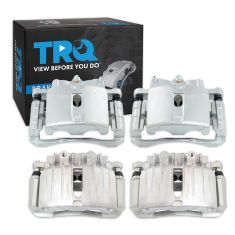1APBS01302-Chevrolet GMC Cadillac Rear Ceramic Performance Brake Pad & Rotor Kit with Calipers TRQ Performance BKA14052

Replaces
2004 Cadillac Escalade EXT Rear Ceramic Performance Brake Pad & Rotor Kit with Calipers TRQ Performance BKA14052

Product Reviews
Loading reviews
5.00/ 5.0
2
2 reviews
Works Great
December 8, 2021
Brakes look great installed perfectly on my 2002 suburban. They work even better I feel confident driving my family with these.
Great choice
September 13, 2024
Great product made from good material
Customer Q&A
How thick are these rotors?
August 1, 2022
10
At this time we do not have any information on the thickness of the rotors.
August 1, 2022
Emma F
Cadillac is a registered trademark of General Motors Company. 1A Auto is not affiliated with or sponsored by Cadillac or General Motors Company.
See all trademarks.


















